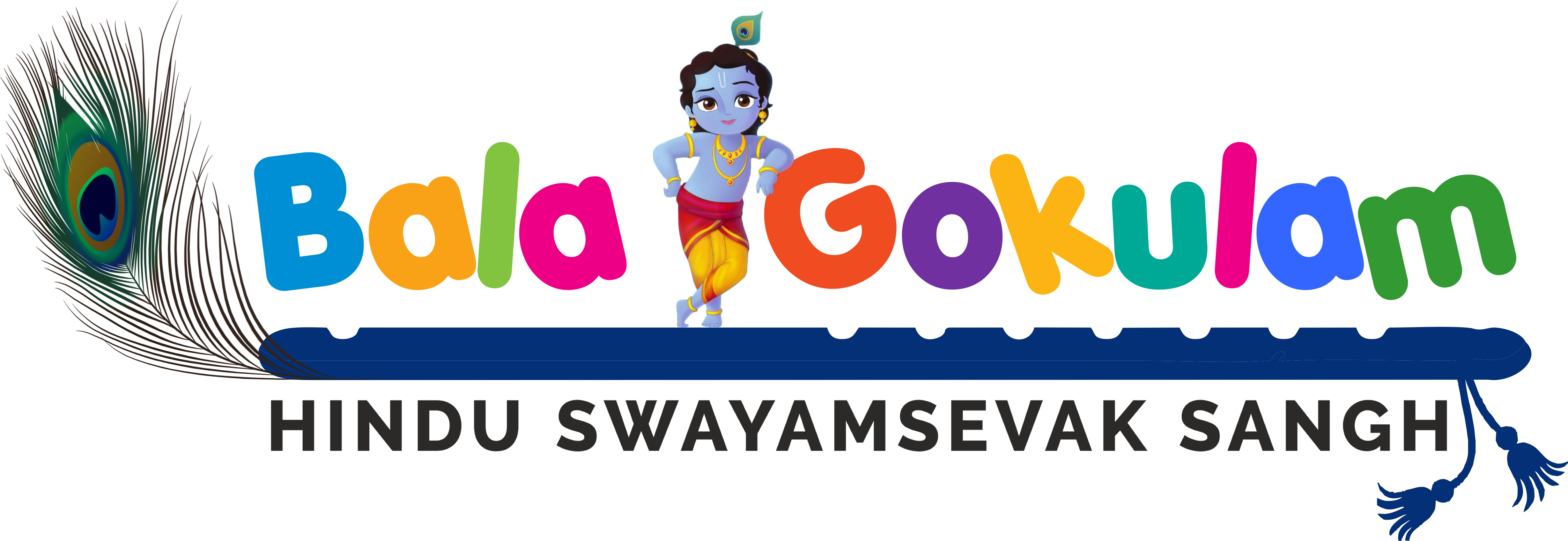Shanti Mantra
Shanti mantra is one of most recited mantra in Hindu Dharma because of it’s meaning and relevance to our Dharma. We recite this mantra to pray for happiness of not just our family, not just our Balagokulam, not just for followers of Hindu Dharma but every one else in the world. In Balagokulam too we recite towards the end of any major activity/session.

ॐ सर्वे भवन्तु सुखिनः ।
सर्वे सन्तु निरामयाः ॥
सर्वे भद्राणि पश्यन्तु ।
मा कश्चित् दुःखभाग्भवेत् ॥
ॐ शान्तिः शान्तिः शान्तिः ॥
 ॐ sarve bhavantu sukhinaḥ |
ॐ sarve bhavantu sukhinaḥ |
sarve santu nirāmayāḥ ||
sarve bhadrāṇi paśyantu |
mā kaścit duḥkhabhāgbhavet ||
ॐ śāntiḥ śāntiḥ śāntiḥ ||
Meaning:
May all live happily. May all enjoy good health. May all see auspiciousness. May none experience distress. May peace prevail everywhere.
Extended Meaning:
In this shloka, we are asking for the well-being of everyone. We want everyone to be happy and healthy. No one should suffer. Aren’t our ancestors so wonderful? We do not just think about myself or my family but we look out for everyone. In fact, this shloka is not just asking for happiness of human beings but probably more – all the animals, living and non-living, for the entire universe! It teaches us to be broadminded.
In fact, We are praying for every-thing-person-animal-atom-energy-quanta that exists. We are praying for the the welfare of the entire Universe, with no exception for “us” or another. This prayer is really a reminder of our universal self. To know that we are no different from the Universe, even though our way of seeing the world doesn’t usually feel that way. We pray so we may be joined in with the whole again.
Our heart is a mirror; we humans come preloaded with empathy. You would have noticed that when you see someone crying, you feel sadness yourself. When you hear the laugh-track on the TV comedy, you want to laugh along too. When you see happy little children, you feel the same happiness. Our hearts have evolved with this empathy, reflecting emotions from the world we see around.
pashyantu, to see. The mirror reflects everything. For our heart to experience true joy, there must be joy in the world all around. In a selfish way, we are wishing that there’s happiness, health, auspicious signs and good fortune all around, because that’s what we want in our hearts.
Sukha is more than happiness. Su-kha literally means good space. When a wheel is moving around it’s center, the cart moves smoothly and quickly. When the wheel is not moving around it’s center (it’s eccentric), the cart moves in a jerky manner, causing vibration and damage. That’s why we take our cars to the wheel alignment shops. To restore good space in the center.
Su-kha means that the wheel is in full alignment. When we have alignment, things move smoothly just as it’s naturally supposed to. That makes us happy, but it’s more than that. We feel a sense of order, oneness, and comfort in knowing that all is well with the world.
When our outside world is out of alignment with our nature, we live lives out of balance. This is what we call “stress”. We are unhappy, of course, but we are also unhealthy, unstable and unable to meet our full potential. This is “dukha”, and we don’t want any of it. We pray for this return to alignment- positively as a prayer for “sukha” in the first line, and as the negation of “dukha” in the last line.
We close with the three Shanti (peace). We pray for peace in the Universe, peace in our hearts, and peace between.
Om Shanti Shanti Shanti
ॐ शान्तिः शान्तिः शान्तिः ॥
(Ref: https://yogabharati.org/article-blog/sarve-bhavantu-sukhinah)
![]()
Note: Exercise files like Audio, Video or PDF for this resource item will be available if uploaded.
Audio


